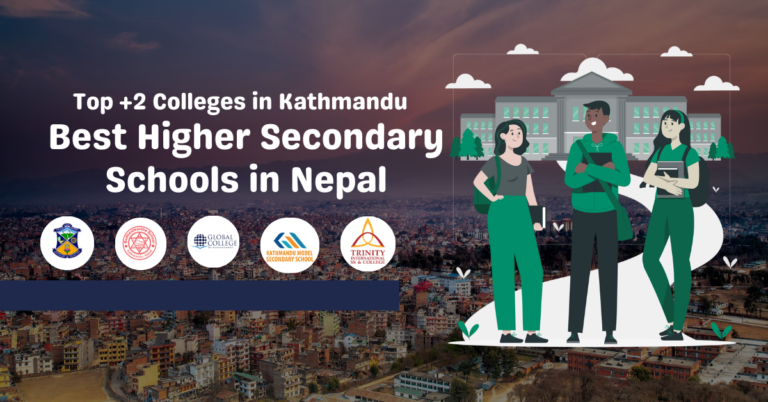BSc Computer Science and Information Technology in
Introduction


BSc in Computer Science and Information Technology (CSIT) is not just another degree—it’s the gateway to the booming tech industry, both locally and globally. Over the past decade, the demand for IT professionals has surged drastically, thanks to the digital revolution across sectors like finance, healthcare, education, and e-commerce. If you’re a student who just completed high school (+2 Science) and you’re wondering what career path to choose, CSIT might be your ticket to a rewarding future.
The BSc CSIT program, primarily conducted by Tribhuvan University (TU), has gained immense traction for its solid curriculum that blends theoretical knowledge with practical skills. Unlike traditional computer science degrees, this one is designed to meet international standards and prepare students for real-world applications. The course covers programming, software engineering, data structures, AI, and networking, ensuring students are industry-ready.
The current tech ecosystem in Nepal is rapidly growing. Kathmandu alone hosts hundreds of software companies and IT startups. This has increased job opportunities, internships, and freelance projects for CSIT graduates. Whether you aim to work for an MNC, start your own venture, or pursue further studies abroad, a CSIT degree gives you a strong foundation.
In short, BSc CSIT isn’t just a degree—it’s a roadmap to innovation, problem-solving, and global competitiveness.
What is BSc CSIT?
BSc CSIT stands for Bachelor of Science in Computer Science and Information Technology. It’s a four-year, eight-semester undergraduate program designed to produce skilled IT professionals who are competent in software development, networking, database management, and more. The course is offered under the Institute of Science and Technology (IOST) at Tribhuvan University, and dozens of TU-affiliated colleges across Nepal provide this program.
The key objective of BSc CSIT is to integrate computer science and IT in a way that prepares students for both academic research and practical applications. Unlike BSc CS or BIT (Bachelor of Information Technology), CSIT combines technical depth with business acumen. This dual nature is what sets CSIT apart from other computer-related degrees.
Here’s what makes BSc CSIT unique:
- It emphasizes both software and hardware skills.
- Courses include Data Structures, AI, Machine Learning, Mobile App Development, and Web Technologies.
- Students must complete real-time projects and internships.
- Offers elective courses based on students’ interest like Bioinformatics, Embedded Systems, and Cloud Computing.
The program doesn’t just make you a coder—it shapes you into a complete IT professional capable of handling real-world challenges, communicating ideas effectively, and leading tech teams.
Eligibility Criteria
Before applying for BSc CSIT, it’s crucial to understand the eligibility requirements. Since the course is science-heavy and technical, it’s mostly targeted toward students who’ve completed their higher secondary education in the science stream.
Here’s a breakdown of the eligibility criteria:
- Academic Qualification: Applicants must have completed 10+2 or equivalent from a recognized institution.
- Subject Requirements: Students should have taken Physics and Mathematics in Grade 11 and 12.
- Minimum Marks: At least a ‘C’ grade in each subject or a second division in aggregate in 10+2 Science or equivalent.
Students from CTEVT with a Diploma in Computer Engineering or any equivalent are also eligible to apply, provided they meet the subject criteria.
A common misconception is that students from management or humanities can also apply—but that’s incorrect. BSc CSIT strictly requires a science background due to the complexity and depth of the subjects involved.
If you’re eligible, the next step is to sit for the IOST Entrance Examination conducted by Tribhuvan University. Admission is granted based on merit, so the higher you score, the better your chance of getting into a reputed college.
Admission Process
The admission process for BSc CSIT is relatively standardized and revolves around a centralized entrance exam conducted by TU’s Institute of Science and Technology (IOST). If you’re planning to apply, here’s how the process typically works:
Step-by-Step Admission Process:
- Online Application:
- Visit the official TU IOST website.
- Fill out the CSIT entrance form online.
- Pay the application fee through bank or eSewa/Khalti.
- Entrance Exam:
- TU conducts a standardized entrance test for all applicants.
- The test includes questions from Mathematics, Physics, English, and Computer Science.
- Duration: 2 hours, with multiple-choice questions (MCQs).
- Merit List:
- Based on the score, a merit list is published.
- Students can then choose colleges depending on their rank and preference.
- College Selection:
- After the result, selected students are allowed to apply to various TU-affiliated colleges.
- Some top colleges fill up quickly, so early application post-result is advised.
- Final Admission:
- Document verification and college-level interviews (in some cases).
- Payment of the admission and semester fees.
Important Dates:
- Application Form Release: Usually around May-June
- Entrance Exam: July-August
- Admission Deadline: September
Students are advised to regularly check the official TU IOST portal for accurate dates and updates. Preparing early for the entrance exam is key, as competition is fierce, especially for top-tier colleges.
Top Universities and Colleges Offering BSc CSIT
BSc CSIT is primarily offered by colleges affiliated with Tribhuvan University. There are more than 60 TU-affiliated colleges across Nepal offering this course. Some of these colleges are known for their outstanding faculty, infrastructure, placement assistance, and alumni network.
Top CSIT Colleges (Tribhuvan University Affiliated):
| College Name | Location | Notable Features |
|---|---|---|
| Amrit Science Campus (ASCOL) | Kathmandu | Government college, highly reputed |
| St. Xavier’s College | Maitighar | Competitive entrance, great faculty |
| Patan Multiple Campus | Lalitpur | Affordable, good CSIT program |
| Deerwalk Institute of Technology | Sifal, Kathmandu | Focus on real-world software projects |
| Sagarmatha College of Science and Technology | Sanepa | Strong industry connections |
| Prime College | Khusibun | Good infrastructure and project-based learning |
| Samriddhi College | Bhaktapur | Affordable fees, qualified instructors |
| Texas International College | Mitrapark | Modern labs and international exposure |
| Asian School of Management | Gongabu | Emphasis on cloud and AI education |
Each of these colleges has a different admission cutoff, faculty background, and learning environment. Government colleges like ASCOL and Patan Multiple Campus are highly competitive and affordable. In contrast, private colleges like Deerwalk and Prime offer more personalized attention and tech facilities.
When choosing a college, students should consider:
- Faculty qualifications
- Lab facilities
- Internship partnerships
- Alumni feedback
- Location and accessibility
BSc CSIT Syllabus and Curriculum
The BSc CSIT curriculum in Nepal is carefully structured to provide a comprehensive understanding of both computer science fundamentals and real-world IT applications. Developed by Tribhuvan University’s Institute of Science and Technology (IOST), the course spans four years over eight semesters. Each semester includes core theoretical subjects, lab work, projects, and eventually an internship.
Semester Breakdown of Subjects
Let’s look at a general breakdown of the curriculum:
Semester 1
| Course Code | Course Title | Credit Hours | Course Nature |
|---|---|---|---|
| CSC114 | Introduction to Information Technology | 3 | Theory + Practical |
| CSC115 | C Programming | 3 | Theory + Practical |
| CSC116 | Digital Logic | 3 | Theory + Practical |
| MTH117 | Mathematics I | 3 | Theory |
| PHY118 | Physics | 3 | Theory + Practical |
| Total | 15 |
Semester 2
| Course Code | Course Title | Credit Hours | Course Nature |
|---|---|---|---|
| CSC165 | Discrete Structure | 3 | Theory + Practical |
| CSC166 | Object Oriented Programming | 3 | Theory + Practical |
| CSC167 | Microprocessor | 3 | Theory + Practical |
| MTH168 | Mathematics II | 3 | Theory |
| STA169 | Statistics I | 3 | Theory + Practical |
| Total | 15 |
Semester 3
| Course Code | Course Title | Credit Hours | Course Nature |
|---|---|---|---|
| CSC211 | Data Structure and Algorithms | 3 | Theory + Practical |
| CSC212 | Numerical Method | 3 | Theory + Practical |
| CSC213 | Computer Architecture | 3 | Theory + Practical |
| CSC214 | Computer Graphics | 3 | Theory + Practical |
| STA215 | Statistics II | 3 | Theory + Practical |
| Total | 15 |
Semester 4
| Course Code | Course Title | Credit Hours | Course Nature |
|---|---|---|---|
| CSC262 | Theory of Computation | 3 | Theory + Practical |
| CSC263 | Computer Networks | 3 | Theory + Practical |
| CSC264 | Operating Systems | 3 | Theory + Practical |
| CSC265 | Database Management System | 3 | Theory + Practical |
| CSC266 | Artificial Intelligence | 3 | Theory + Practical |
| Total | 15 |
Semester 5
| Course Code | Course Title | Credit Hours | Course Nature |
|---|---|---|---|
| CSC314 | Design and Analysis of Algorithms | 3 | Theory + Practical |
| CSC315 | System Analysis and Design | 3 | Theory + Practical |
| CSC316 | Cryptography | 3 | Theory + Practical |
| CSC317 | Simulation and Modeling | 3 | Theory + Practical |
| CSC318 | Web Technology | 3 | Theory + Practical |
| – | Elective I | 3 | – |
| Total | 18 |
Elective I Options:
- CSC380 – Applied Logic
- CSC381 – E-Commerce
- CSC382 – Automation and Robotics
- CSC383 – Neural Networks
- CSC384 – Computer Hardware Design
- CSC385 – Cognitive Science
Semester 6
| Course Code | Course Title | Credit Hours | Course Nature |
|---|---|---|---|
| CSC375 | Software Engineering | 3 | Theory + Practical |
| CSC376 | Compiler Design and Construction | 3 | Theory + Practical |
| CSC377 | E-Governance | 3 | Theory + Practical |
| CSC378 | NET Centric Computing | 3 | Theory + Practical |
| CSC379 | Technical Writing | 3 | Theory |
| – | Elective II | 3 | – |
| Total | 18 |
Elective II Options:
- CSC380 – Applied Logic
- CSC381 – E-Commerce
- CSC382 – Automation and Robotics
- CSC383 – Neural Networks
- CSC384 – Computer Hardware Design
- CSC385 – Cognitive Science
Semester 7
| Course Code | Course Title | Credit Hours | Course Nature |
|---|---|---|---|
| CSC419 | Advanced Java Programming | 3 | Theory + Practical |
| CSC420 | Data Warehousing and Data Mining | 3 | Theory + Practical |
| MGT421 | Principles of Management | 3 | Theory |
| CSC422 | Project Work | 3 | Practical |
| – | Elective III | 3 | – |
| Total | 15 |
Elective III Options:
- CSC423 – Information Retrieval
- CSC424 – Database Administration
- CSC425 – Software Project Management
- CSC426 – Network Security
- CSC427 – Digital System Design
- MGT428 – International Marketing
Semester 8
| Course Code | Course Title | Credit Hours | Course Nature |
|---|---|---|---|
| CSC475 | Advanced Database | 3 | Theory + Practical |
| CSC476 | Internship | 6 | Industrial Attachment |
| – | Elective IV | 3 | – |
| – | Elective V | 3 | – |
| Total | 15 |
Elective IV & V Options:
- CSC477 – Advanced Networking with IPv6
- CSC478 – Distributed Networking
- CSC479 – Game Technology
- CSC480 – Distributed & Object-Oriented Database
- CSC481 – Introduction to Cloud Computing
- CSC482 – Geographical Information System
- CSC483 – Decision Support System & Expert System
- CSC484 – Mobile Application Development
- CSC485 – Real-Time System
- CSC486 – Network & System Administration
- CSC487 – Embedded Systems Programming
- MGT488 – International Business Management
The CSIT syllabus is regularly updated to include modern tools, frameworks, and programming methodologies. The focus is on ensuring that students don’t just graduate with bookish knowledge, but with a skill set that’s immediately applicable in the job market.
This hands-on approach makes CSIT graduates from Nepal highly sought after in the tech market, as they’re proficient not only in theory but also in building apps, managing networks, and handling databases from scratch.
Fee Structure
The cost of pursuing a BSc CSIT degree can vary significantly depending on whether you choose a government or a private college. Here’s a detailed breakdown to help you plan financially.
Government Colleges (Public):
- Examples: Amrit Science Campus (ASCOL), Patan Campus
- Total Fee (4 years): NPR 200,000 – NPR 350,000
- These colleges are heavily subsidized by the government and are ideal for students looking for quality education at minimal cost.
- Entrance is highly competitive due to limited seats and high demand.
Private Colleges:
- Examples: Deerwalk Institute, Prime College, Texas College
- Total Fee (4 years): NPR 500,000 – NPR 1,200,000
- Fees include tuition, lab charges, library, project, exam fees, and semester registrations.
- Some premium private colleges charge higher fees due to modern infrastructure, smart labs, and better placement assistance.
Other Costs to Consider:
- Books and Materials: NPR 5,000 – 10,000 annually
- Laptop (if needed): NPR 60,000 – 120,000
- Internet and Software Tools: NPR 1,000 – 2,000/month
- Internship and Project Expenses: Varies (NPR 10,000+)
If affordability is a concern, applying for scholarships and financial aid (discussed in the next section) can help ease the burden. It’s wise to compare colleges not only by fee structure but also by return on investment (ROI) in terms of skills acquired and placement opportunities.
Scholarships and Financial Aid
The good news for aspiring CSIT students in Nepal is that several financial support systems are available—from the government, universities, and private institutions.
Types of Scholarships:
1. TU IOST Scholarship Quota:
- Available in TU constituent colleges like ASCOL, Patan Campus.
- Awarded based on entrance merit and/or need basis.
- Covers full tuition fees or partial waiver.
2. Internal College Scholarships:
Many private colleges offer:
- Merit-based Scholarships: Top scorers in +2 or entrance exams get 25%–100% fee waiver.
- Need-based Scholarships: Students from disadvantaged backgrounds can apply.
- Female Quota: Some colleges encourage female participation with discounts or reserved seats.
3. Government Support:
- MoEST and Ministry of Education provide scholarships to marginalized communities (Dalits, Janajatis, disabled, and remote-area students).
- Must apply with proof and documentation.
How to Apply:
- Submit application forms during the admission window.
- Include academic records, citizenship, income proof (for need-based), and recommendation letters.
- Prepare for an interview if required.
Getting a scholarship can significantly reduce the financial pressure and motivate students to maintain good academic performance. Many colleges also renew scholarships every semester based on GPA.
Career Scope after BSc CSIT
Graduating with a BSc CSIT degree opens a wide array of career doors—not just in Nepal, but internationally. The IT sector in Nepal is experiencing a transformative boom. From government digitalization projects to private tech companies and international outsourcing firms, the demand for skilled IT professionals is higher than ever.
Popular Job Roles for CSIT Graduates:
| Role | Description | Starting Salary (NPR) |
|---|---|---|
| Software Developer | Web & mobile app development | 25,000 – 60,000 |
| Network Administrator | Manages networks in offices & ISPs | 20,000 – 45,000 |
| Database Administrator | Oversees large-scale data systems | 30,000 – 55,000 |
| IT Officer | Roles in banks, airlines, and NGOs | 30,000 – 50,000 |
| QA Engineer | Testing software for bugs and issues | 20,000 – 40,000 |
| Web Developer | Frontend/backend development | 25,000 – 50,000 |
| IT Support Specialist | Corporate IT and technical support | 15,000 – 35,000 |
Top Companies Hiring :
- Deerwalk Inc.
- Leapfrog Technology
- CloudFactory
- Fusemachines
- LogPoint
- Cotiviti Nepal
- Braindigit
- Tekvortex
The job market is also rich in freelancing and remote work. Many CSIT grads earn money from global platforms like Upwork, Fiverr, and Freelancer while studying or shortly after graduation.
Global Career Opportunities
For students with international ambitions, a BSc CSIT degree can be a stepping stone to advanced studies or global careers. The degree is well-recognized in countries like the US, Australia, Canada, and many European nations. With the right skills, certifications, and language proficiency (like IELTS), you can unlock a world of possibilities.
Post-CSIT Global Options:
1. Further Studies Abroad:
- MS in Computer Science
- MSc in IT
- MBA in IT Management
- Preferred destinations include USA, Canada, UK, Australia, Germany.
- Exams: GRE, IELTS, or TOEFL (depending on the country).
2. Job Opportunities Abroad:
- Positions in software development, data analytics, cybersecurity, and cloud computing.
- Work visas like H1B (US), PR (Canada, Australia) allow skilled migration.
3. Certifications That Add Value:
- AWS Certified Solutions Architect
- Microsoft Certified Azure Developer
- Cisco CCNA/CCNP
- CompTIA Security+
4. Freelancing and Remote Work:
- Global companies are increasingly hiring remote tech talent.
- Platforms like Toptal, Guru, Freelancer offer high-paying contracts.
A strong command of English, problem-solving skills, and a good project portfolio can put you ahead in international career races. Many CSIT graduates from Nepal have found success in the US, Canada, and Australia through further studies and professional placements.
Internship and Industry Exposure
One of the standout features of the BSc CSIT program in Nepal is its focus on practical industry exposure. In the final year, students are required to complete a mandatory internship, typically lasting between 3 to 6 months. This experience is more than just a checkbox—it’s a critical bridge between academic learning and the professional world.
Importance of Internships:
- Real-World Experience: Internships allow students to apply classroom concepts to real-life projects.
- Resume Building: A strong internship can significantly improve your job prospects.
- Networking: Many students get their first job offer through the connections made during their internship.
- Skill Development: Learn soft skills like teamwork, communication, and client handling.
How Are Internships Arranged?
- Some colleges have formal tie-ups with software firms, ISPs, banks, and NGOs.
- Students may also apply independently to companies based on their interest.
- Internships can be paid or unpaid depending on the company and duration.
Top Companies Offering Internships:
- Deerwalk Services
- Leapfrog Technology
- CloudFactory
- Fusemachines
- Braindigit
- eSewa
- Khalti
- Banks and telecom companies like Ncell and Nepal Telecom
Many students also intern remotely with international companies or freelance clients. This not only adds global experience but also opens doors for international job offers post-graduation.
Higher Education Options after BSc CSIT
After completing a BSc CSIT degree, students are well-positioned to pursue advanced studies both in Nepal and abroad. The curriculum provides a solid foundation in computing, algorithms, mathematics, and information systems, making CSIT graduates eligible for a variety of post-graduate programs.
Postgraduate Options :
- MSc in Computer Science (Tribhuvan University, PU, KU)
- MSc in Information Technology
- MTech (limited programs available)
- MBA in Information Technology (PU and KU)
These programs typically last 2 years and focus on deeper research and application in specific areas like AI, Big Data, Machine Learning, and Business Analytics.
Abroad Options:
- MS in Computer Science/Engineering
- Master of Data Science
- Cybersecurity Programs
- MSc in Software Systems
- MSc in Cloud Computing
- Popular destinations: USA, Canada, Germany, Australia, Finland
Entrance Exams and Requirements:
- GRE/TOEFL for the USA
- IELTS for UK, Australia, Canada
- German universities may require A1/A2 German language proficiency
Top Foreign Universities CSIT Graduates Apply To:
- University of Melbourne
- Carnegie Mellon University
- University of Toronto
- Technical University of Munich (TUM)
- National University of Singapore (NUS)
With an increasing number of Nepalese students securing scholarships and assistantships abroad, higher education after CSIT has become a practical and beneficial route.
Challenges Faced by CSIT Students
While BSc CSIT offers great promise, it is not without its fair share of challenges. From outdated syllabuses to poor infrastructure in some colleges, students often face roadblocks that can impact the quality of their education.
Academic and Institutional Challenges:
- Outdated Syllabus in Some Colleges: Despite updates, many colleges are slow to adopt the latest curriculum revisions.
- Limited Lab Resources: Not all colleges are equally equipped with modern computer labs, especially in rural areas.
- Untrained or Underqualified Teachers: Lack of industry exposure among faculty in some institutions.
- Theoretical Over Practical Bias: Some teachers focus too much on theory without adequate hands-on practice.
Personal and Socioeconomic Barriers:
- Affordability: Many talented students struggle to afford fees in private colleges.
- Lack of Guidance: Career counseling and mentorship are rare in smaller towns.
- Language Barrier: Limited proficiency in English can hamper learning and job prospects.
Industry Challenges:
- Limited Internship Seats: Many students compete for the same few internship opportunities.
- Underpaid Entry-Level Jobs: Freshers often have to work at very low wages.
- Lack of Research Opportunities: Very few colleges encourage or fund student research.
Despite these obstacles, determined students with access to the right resources, mentorship, and online learning platforms (like Coursera, Udemy, or YouTube) can still thrive.
Tips for Success in BSc CSIT
Success in BSc CSIT doesn’t just come from attending lectures or memorizing theory. It’s a blend of academic effort, technical skill-building, networking, and continuous learning. Here are proven tips to help you make the most of your CSIT journey.
1. Build Strong Fundamentals:
- Don’t just pass; understand core concepts like algorithms, object-oriented programming, and database design.
- Practice coding daily using platforms like LeetCode, HackerRank, and Codeforces.
2. Work on Personal Projects:
- Create a GitHub portfolio with your apps, websites, or data projects.
- Projects demonstrate initiative and practical knowledge to future employers.
3. Network with the IT Community:
- Join CSIT associations, IT events, seminars, and hackathons.
- Attend events by groups like Girls in Tech Nepal, Techsansar, and DeerHack.
4. Learn Beyond the Syllabus:
- Explore frameworks, libraries, and tools that aren’t covered in class: React, Node.js, Django, Docker, etc.
- Learn basic DevOps and cloud computing fundamentals (AWS, Azure, Google Cloud).
5. Certifications and Online Courses:
- Complement your degree with certifications like Google IT Support, AWS Cloud Practitioner, or Microsoft Learn.
- Online learning platforms like Coursera, edX, LinkedIn Learning are goldmines.
6. Maintain GPA + Soft Skills:
- Good grades help in scholarships and postgraduate applications.
- Soft skills like communication, teamwork, and leadership are just as important.
In short, don’t wait until graduation. Start building your tech career from Day 1 of your CSIT degree. Focus on learning, doing, and connecting.
Conclusion
BSc Computer Science and Information Technology (CSIT) is more than just a degree—it’s a stepping stone to a future filled with innovation, problem-solving, and endless opportunities. Whether you’re aiming to become a software engineer, pursue a master’s abroad, or build your own tech startup, this program equips you with the tools to thrive.
From an ever-evolving syllabus to increasing job prospects in both the national and global IT industry, CSIT is shaping the next generation of digital leaders. However, success doesn’t come automatically. It requires hard work, constant learning, practical exposure, and a proactive attitude.
If you’re passionate about technology and want a degree that balances academic rigor with hands-on experience, then BSc CSIT might just be the perfect fit for you.
FAQs
1. Is BSc CSIT better than BSc Computer Science?
Yes, CSIT combines both computer science and information technology, offering more practical exposure and a wider range of career opportunities compared to a traditional BSc in Computer Science.
2. How tough is the BSc CSIT entrance exam?
The exam is moderately tough. With the right preparation in Physics, Math, English, and Computer Science, students can easily crack it. Coaching classes can also help.
3. Can management students apply for BSc CSIT?
No, BSc CSIT is strictly for students with a science background who have studied Mathematics and Physics in +2 or equivalent.
4. Are there job opportunities for CSIT graduates in Nepal?
Absolutely. Nepal’s growing tech scene offers roles in software development, networking, cybersecurity, and more. Freelancing and remote jobs are also common.
5. Which is the best CSIT college?
Amrit Science Campus (ASCOL), St. Xavier’s, Patan Multiple Campus, and Deerwalk Institute are among the most reputed for BSc CSIT under Tribhuvan University.







